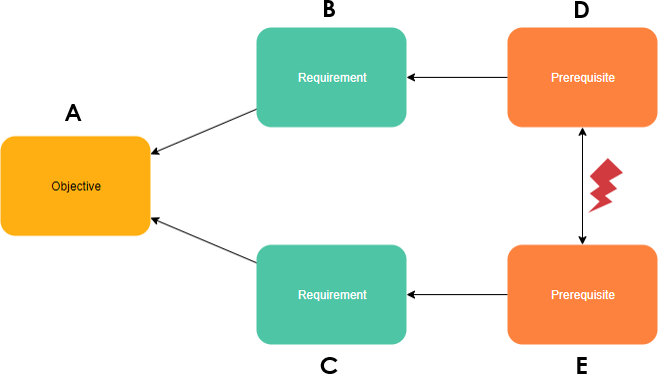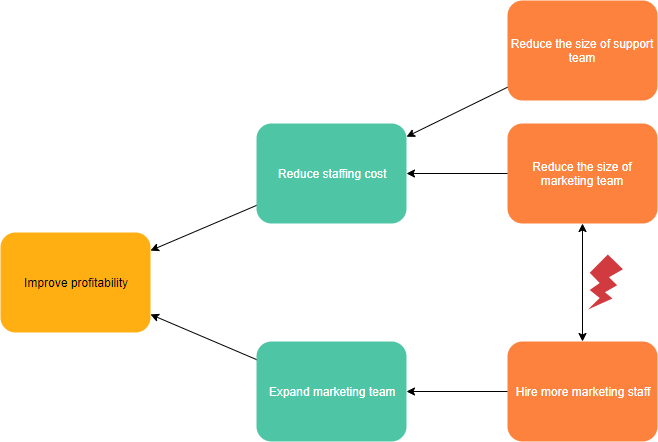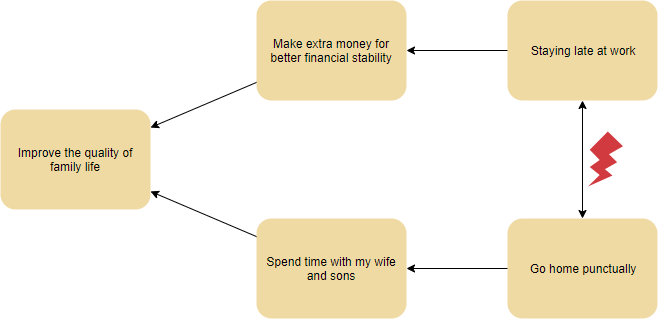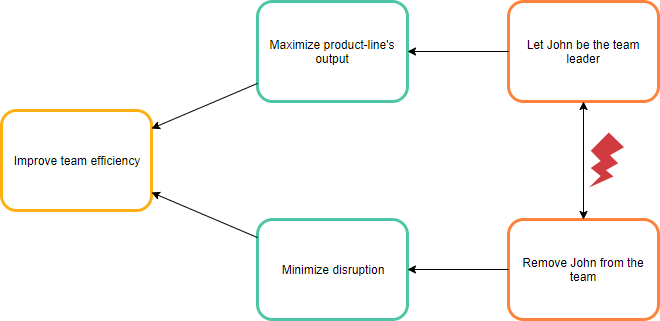The Evaporating Cloud (EC) (also known as conflict resolution diagram) is a logical diagram representing a problem that has no obvious satisfactory solution. It is one of the six Thinking Processes in the Theory of Constraints (TOC).
EC is useful to find a solution to the conflict between two parties or two points of view. This method requires the participants to find ‘win-win’ solutions because it emphasizes that both parties are trying to reach the same ultimate goal.
The most commonly used of the TOC tools the EC was designed to address conflict or dilemma situations (trade-off situations where there is no acceptable compromise) by diagramming the logic behind the conflict and methodically examining the assumptions behind the logic. The Evaporating Cloud has a set format with five boxes, labeled A, B, C, D, E as shown below:

Edit this Evaporating Cloud Template
Interpreting an Evaporating Cloud
- To have objective A, we must have requirement B…
- To have requirement B, we must have prerequisite D…
- To have objective A, we must have requirement C…
- To have requirement C, we must have prerequisite E…
- But prerequisites D and E conflict…
How to Conduct the Evaporating Cloud Tree Process
The general process for applying an EC to problem-solving is described by Cohen (2010) as follows:
- Identify the type of problem
- Write a storyline of this problem in a factual, objective way.
- Build the Cloud
- Check the logical statements of the Cloud and make necessary corrections and upgrades.
- Surface the assumptions behind the logical connections to find the one that is supporting the conflict.
- Construct your solution and check it for a win-win.
Evaporating Cloud Tree Examples


Edit this Evaporating Cloud Tree

Edit this Evaporating Cloud Diagram Example
